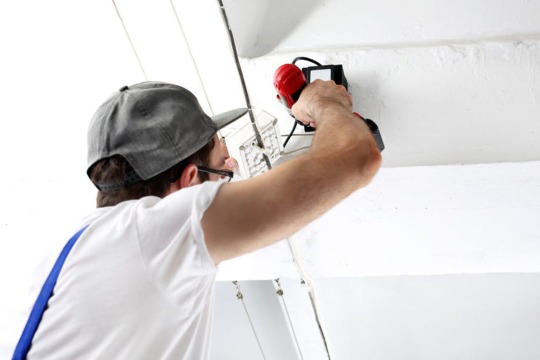Text
Reasons Your Ceiling Is Sagging
%Ceiling Repair Perth%
%Reasons Your Ceiling Is Sagging%
%

%
Five Reasons Your Ceiling is Sagging
Whether the cracks appeared overnight or it has gradually crept in, a sagging or cracked ceiling is not something to be taken lightly.
Small spidery cracks can become large cavernous holes if left untreated. Cracks and sags in your ceiling can be a result of a multitude of cosmetic or structural issues. Importantly, there are simple actions you can take to reduce these risks.
Here are five causes of a sagging or cracked ceiling, and what you can do about them.
1. Structural movement in the building
Building structures can move with seasonal temperature changes, and these movements can cause chaos if they’re not factored in when you build. Your home’s foundations or frame can move, expand, or shrink as temperatures rise and fall. This can cause movement of expansion in materials that are attached to or held up by the structure, including your plasterboard, cornices, and ceiling. These seemingly tiny movements can cause ceilings to warp, stretch, crack, and sag.
Stop a sagging ceiling from getting worse by having your building inspected by an expert. They’ll look for any hidden weak spots where cracking or sagging may begin, and repair any existing issues without hassle.
2. Roof leaks
Water damage from a leaking roof can cause huge issues for your ceiling. If you have just a few litres of water soaking into your insulation fibre, this amounts to tens of kilograms of weight piled onto your ceiling plasterboard, pushing it further and further towards breaking point. Waterlogged insulation is incredibly heavy and, when it falls, can cause serious damage to not only your home and possessions but also cause serious injury to your family.
If you’re seeing a slow-growing patch of mould or stains on your ceiling, these could be signs of a leak in your roof. Roof leaks need to be addressed immediately, but they can be hard to detect or locate.

3) Vibrations from roller doors
Garage ceilings can be exposed to more regular vibrations than other areas of your property. Power-operated roller doors and panel lift doors attached to the building can create sharp, repetitive movements that are transferred through to your ceiling. If these vibrations are repeated often enough, the continued stress can cause your garage ceiling to crack, warp or sag. This can cause greater issues when it comes to doors or windows being misaligned as a result of the movement in the ceiling.
It is often difficult to assess whether a ceiling crack from these vibrations is structural or cosmetic damage. No matter the suspected damage, it’s always best to call in an expert to assess your ceiling before it becomes a huge problem.
4) Age
The age of the ceiling, and of the building itself, can often be the root cause of cracks or sags. As the building ages, so do the fixings and adhesives holding the building together. If these begin to fail, you may see some movement in your building’s structure and ceiling, including cracks around cornices or sagging near joined pieces of plasterboard.
Even relatively new homes can have a sudden appearance of spidery cracks along cornices and ceilings. As your new home ‘settles’ within the first two to three years after completion, the moisture in any materials or adhesives will evaporate. Cracks may appear as your cornices, ceilings and walls settle into their positions.
For help assessing any cracks or sags in your ceiling, no matter the age of your home, it’s best to call in an expert.
5) Termites and White Ants
Termites and white ants are a homeowner’s worst nightmare and for good reason. Like any wooden structure in your home, your ceiling can also fall prey termites and white ants. Termites can cause huge structural damage with few symptoms. They can easily destroy load-bearing timber structures, causing ceilings and walls to sag, crack or even collapse.
To reduce the risk of termites choosing your home for their next feast, make sure you paint, stain, and treat any exposed timber outside your home, have any roof leaks repaired immediately, keep your gutters clean and clear of debris which could harbor termite larvae and, of course, have a regular termite inspection conducted on your property.
While an expert can provide definitive advice on a termite or white ant infestation in your home, there are a few warning signs to look out for:
Water stains or discolouration on your ceiling
Sagging or buckling in your ceiling
Termite ‘frass’ or fecal matter among your rafters
Tunnels or ‘mud tubes’ running up your chimney or external walls
Flying termites near windows or doors
Like other parts of your home, your ceilings will require maintenance and upkeep on a regular basis to avoid major damage to your home and mitigate the risk of injury to your family in the event of a collapse.
The post %Reasons Your Ceiling Is Sagging% appeared on %Ceiling Repair Perth%
from
https://ceilingrepairperth.com.au/reasons-your-ceiling-is-sagging/
from
https://ceilingrepairperth.blogspot.com/2020/08/reasons-your-ceiling-is-sagging.html
from https://alicebaker0.blogspot.com/2020/08/reasons-your-ceiling-is-sagging.html
1 note
·
View note